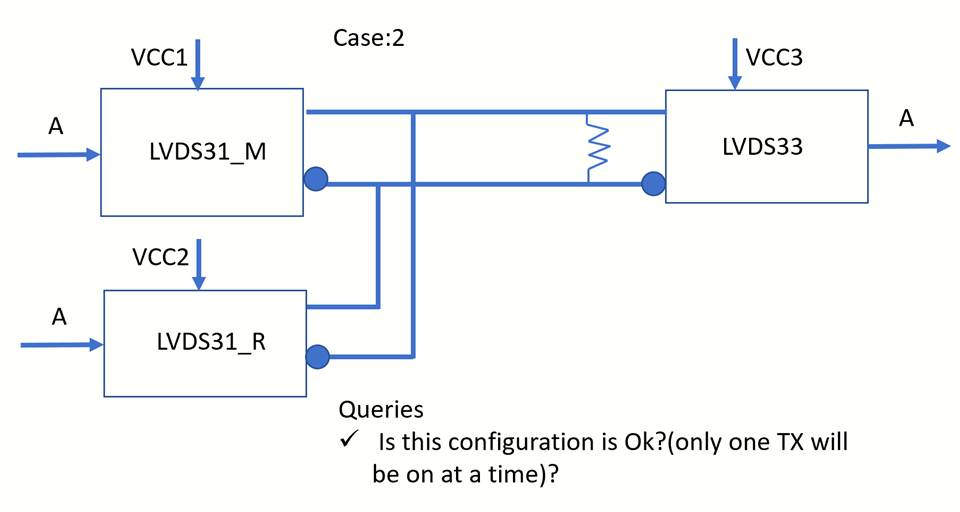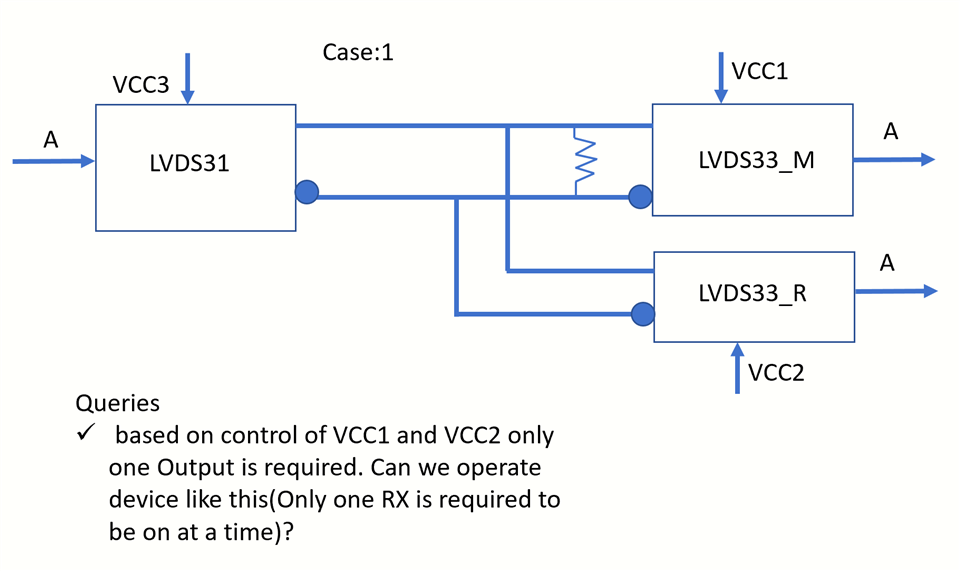Other Parts Discussed in Thread: SN55LVDS31
Tool/software:
Hi Team,
One of my cusotmer wants to use SN55LVDS31 & SN55LVDS33 in their systems. They have raised few queries.
Case - 1:-

What happens in case 1 if 2 drivers are connected to one receiver? Is it allowed? If not what is the issue? Note that only one driver will be active at a time.
Case 2:-

For case 2, there will be two receivers & one transmitter. What happens in this case? Only one Rx will be active at a time?
For both the case it might happen that one device is in OFF state (not powered), what happens in this case?
Regards,
Mitesh

